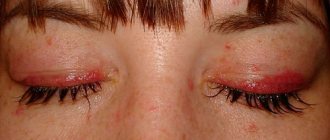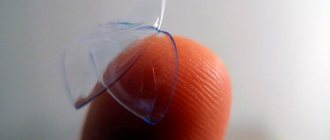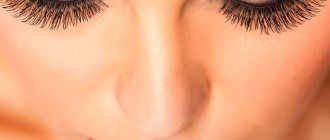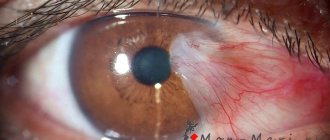Many people who are outdoors, especially in the summer, have encountered a situation where an insect gets into their eyes. Most often these are midges that can appear under the lower or upper eyelid. A person in this situation begins to worry that when a midge gets into the eye, it can bite it from the inside and cause some kind of infection, not to mention the fact that the insect that gets into it causes very severe discomfort.
A midge got into my eye
Probably every person has encountered this problem in their life. The abundance of flying insects in the summer can bring a lot of discomfort to a person relaxing in nature. Due to their small size, midges can not only collide with a person’s eye during flight, but also remain inside under the eyelid. If a midge gets into the eye, it immediately causes a burning sensation, involuntary blinking, lacrimation and redness of the eye.
flower midge
Why does swelling and itching occur at the site of the bite?
Midge saliva contains allergens. The insect injects them into the wound. Swelling occurs at the site of the bite, which is an allergic reaction. Foreign agents penetrate human tissue, triggering a cascade of reactions. They meet with B lymphocytes. The latter synthesize antibodies that attack the allergen.
When they meet, mediators of the allergic reaction are produced and released - histamine, heparin, prostaglandins. They increase the permeability of blood vessels, as a result, fluid accumulates in the tissues, causing an increase in their volume. Swelling is accompanied by redness and pain.
Appearance of the common midge
Help with a midge bite
The wound is very itchy and irritates the person, which is why he scratches it. This should not be done, as pathogenic microorganisms can penetrate the scratches, which will only worsen the situation.
The first step is to wash the bite site with soap and water. Then carefully dry the wound with blotting movements.
The next step is treatment with an antiseptic solution. For this use:
- Chlorhexidine;
- Miramistin;
- Furacilin.
Chlorhexidine is the best alcohol-free antiseptic for treating insect bites
If a midge bite causes severe swelling with unbearable itching, a cold compress will help reduce the severity of these unpleasant symptoms. To prepare it you will need a damp cloth. Put some ice in it. The compress is applied to the wound and kept for 15-20 minutes. It reduces swelling, skin numbness and itching.
To cope with discomfort and itching, pharmacies offer various products - ointments, pencils, sprays, balms. If a midge has bitten you in the eye, you can use:
- Hydrocortisone ointment;
- Fenistil gel;
- Boromenthol;
- Triderm;
- Sinaflan.
Additionally, antihistamines are taken:
- Tavegil;
- Cetrin;
- Claritin;
- Zodak;
- Suprastin.
For multiple bites, it is recommended to take a cold shower for 10 minutes. This will improve the patient's condition and reduce swelling around the wounds.
Antihistamines to combat allergic reactions of any type
What to do first
Five to ten minutes after the bite, swelling of the skin occurs at the site of the lesion, which itches, itches and hurts. The bite area may bother the child for several days, depending on the individual characteristics of the body or the manifestation of allergic reactions. Itching in the bitten area forces the child to scratch it, which leads to the entry of microbes into the wound, aggravation of the general situation, signs of intoxication and an increase in body temperature.
If a child is bitten in the eye by a midge, what should you do? First of all, it is necessary to disinfect the bite site. This procedure can be performed with alcohol, vodka or any other alcohol-containing perfume (cologne or perfume), applying cotton wool soaked in alcohol to the bite site for several minutes. You can also use traditional remedies such as brilliant green or iodine.
Then you need to relieve a symptom such as itching. To do this, you can use any histamine ointments, for example, Fenistil or Cetrin, which you need to lubricate the skin around the bite site. To avoid allergic reactions, you can give your child a Suprastin or Tavegil tablet or syrup.
A child was bitten by a midge, his eye is swollen - what to do? The photo in the article demonstrates the seriousness of the situation. You need to act immediately. You can relieve swelling and inflammation at the bite site by applying ice to it, after wrapping it in several plastic bags. Then it is best to consult a doctor or use traditional methods, but you must ensure that the situation does not worsen.
Consequences of a bite for a person
Most often, midge bites do not pose a threat to life and health. The mark from the wound disappears within 10 days. However, in some cases, insect bites cause a severe allergic reaction - Quincke's edema.
Quincke's edema is a life-threatening condition
With this condition, swelling increases. If assistance is not provided to the victim in a timely manner, swelling of the larynx can lead to suffocation and death. An allergic reaction requires immediate medical attention.
Bites can provoke the development of large lumps. They can become inflamed and form abscesses. The danger is the spread of microbes to neighboring tissues. In severe cases, blood poisoning occurs, which can be fatal (in the absence of adequate and timely treatment). Ulcers require antibiotic therapy.
External symptoms
A bite to the eye usually produces symptoms:
- burning;
- edema;
- pain;
- swelling;
- itching
Scratching the affected area can cause infection.
How can you tell if you are dealing with an insect bite and not a burn from a plant or a food allergy? When stung by hornets, bees and wasps, painful swelling occurs. In the center of them there is a point from the sting or the sting itself. Gadflies and horse flies cause large swellings, and the itching is very strong. After the midges, hematomas remain.
When stung by hornets, bees and wasps, painful swelling appears
Traditional methods of treatment
If, after a midge bite, the eyelid swells, swells and itches, traditional methods will help eliminate these unpleasant symptoms. But they can only be used in cases of mild pathology.
If the allergic reaction is severe and threatens angioedema, go straight to the hospital. Folk remedies will not save you.
Popular alternative medicine recipes:
- plantain and mint. Plant leaves are washed in cool water. Then finely chop and apply the resulting mass to the affected area. The product effectively relieves inflammation and swelling;
- chamomile. Take a filter bag and fill it with 200 ml of boiled water. Infuse the product for 15 minutes, then moisten a cotton pad with it. The latter is applied to the bite area. Chamomile infusion relieves swelling, itching and soothes irritated skin;
- potato. The tuber is washed and peeled. It is passed through a meat grinder, after which the resulting pulp is applied to the wound. Repeat the action 5 to 10 times a day. The product effectively eliminates swelling;
- soda lotions. Dissolve 1 tsp in a glass of boiled water. soda To stir thoroughly. Then soak a cotton pad in the solution and apply to the wound area. The product fights swelling and puffiness. It is recommended to wipe the affected area with it regularly.
Traditional methods of treatment are used as a complement to drug therapy. It is advisable to consult a doctor before using them.
What to do if bitten by a midge?
The method of therapy directly depends on where the bite is. Local and internal medications are used for treatment; traditional methods are in demand. It is important to follow the doctor’s recommendations, taking into account the age of the young patient. Eyes should be treated with special care, since decreased vision after encountering midges is not such a rare occurrence.
Topical products to relieve symptoms and prevent allergies
Successful treatment is a complex of various measures. If a child has been bitten by a black midge, consult a doctor to prescribe the necessary medications.
The most common types of ointments and creams are:
- Sudocrem. This drug is approved for children under 12 months of age. It promotes wound healing and relieves inflammation in the bite area. Treat the wound with it 2 times a day for 5 days.
- Hydrocortisone, Dexamethasone. These medications reduce allergic manifestations and relieve inflammation. The course of treatment is 3 days. Children under 6 years of age are not recommended to take such drugs because they are hormonal.
- If you are bitten on the leg, you can use wound-healing ointments like Levomikol.
- Treat the bite site with boric or salicylic alcohol, Valocordin, Corvalol to relieve itching as quickly as possible.
- If you are prone to allergies, the bite site can be anointed with a thin layer of hormonal ointment, for example, Advantan, Cynovit, Psilo-balm. It should be remembered that for young children it is better not to use even external hormonal agents.
READ ALSO: bedbug bites in children: symptoms with photos and treatment with antiseptics
In case of a pronounced allergic reaction to a bite, topical medications are not used. Urgent medical inpatient treatment is required.
Treatment with tablets
The use of drugs in tablet form is used when local therapy has not been successful. It happens that the midge bites the baby in the leg, and the swelling begins to spread throughout the body. In such cases, it is necessary to use antihistamines prescribed by the pediatrician: Tavegil, Loratadine, Diazolin, Zyrtec, Erius in the form of syrup. Even the little ones are prescribed Zyrtec in drops, Fenkarol according to individual dosage calculations, Suprastin.
In combination with antiallergic drugs, decongestants are prescribed: Furosemite, Manit. The use of hormonal drugs is extremely undesirable, especially for babies in the first year of life.
Folk remedies that help relieve swelling at home
Uncomplicated bites can be treated at home. Among traditional medicine, there are many recipes for various lotions to eliminate discomfort after a midge attack. A child is bitten by an insect, his eye is swollen, and his ear is swollen - it’s time to pay attention to products available to everyone to alleviate the condition: (more details in the article: what to do if a child’s eye is swollen after an insect bite?)
READ ALSO: what to do if a child has a swollen eye?
- Soda compress. To do this, dissolve 1/2 teaspoon of salt and a teaspoon of soda in a cup of warm water, mix everything thoroughly, soak gauze or a cotton pad in the solution and apply it to the swollen part of the body. This procedure is carried out no more than 3-4 times a day.
- Crushed leaves of mint, plantain, bird cherry, and aloe relieve itching.
- It's good to make potato compresses. You just need to grate the potatoes on a fine grater, wrap them in gauze and apply them to the sore spot.
- For mild eye damage, it is recommended to apply a little toothpaste to the wound if the bite site is red.
READ IN DETAIL: How to treat swelling after an insect bite in a child?
What you should not do if you are bitten
When a midge bites you in the eye, you should refrain from certain actions:
- Use household chemicals as an antiseptic.
- Scratch the bite area.
- Apply hormonal ointments to the wound itself. This will cause severe burning and slow down skin regeneration. Such preparations are applied only around the bite area.
- Refuse the treatment suggested by the doctor.
- Neglect medical help if your health worsens.
Such actions can lead to the development of complications. If the condition worsens, medical attention is required.
What actions are contraindicated?
- Do not use alcohol or ammonia to treat the affected eye.
- Do not rub or comb the bite site, especially with dirty hands.
- Ointments based on hormonal components should not be applied to the affected area of the skin. Such products can only be applied around the affected area.
- You cannot self-prescribe any antibiotics or antiallergic drugs. You also cannot refuse to take medications that were prescribed by your doctor.
- If there is no effect of treatment, symptoms that arise should not be left without proper attention. If the patient's condition does not improve, you should immediately consult a doctor.
Do not use alcohol for processing
If a midge bite is left unattended, an infection may enter the affected area, especially in natural conditions. In this case, all the symptoms will be even more pronounced, swelling and inflammation of the eye will increase. As a result of infection, the eyelids on the affected eye may become so swollen that they completely close. In this case, the only right decision would be to go to an ophthalmologist, who will determine the extent of damage to the eye and prescribe the necessary treatment.
Inflammation caused by a midge bite should not be ignored.
If you start treating the affected eye in time, the appearance of allergic swelling in the bite area can be avoided. Also, with proper care of the wound, itching and inflammation disappear as soon as possible, without causing much discomfort to the person.
Video: How to remove a foreign body from the eye
Prevention
In each specific case, the body reacts differently to a midge bite in the eye. To protect yourself from such an unpleasant situation, you must follow a number of preventive measures:
- Wear sunglasses when walking in the forest, to a pond or in a field.
- Avoid visiting rivers and lakes in hot weather. Insects are exhausted from thirst and heat, so there will be most of them there.
- Use special insect repellent sprays. They usually protect a person for 3-8 hours.
- Use spirals and candles that repel insects in open areas.
- Use mosquito nets if you are going to stay for a long time in a place where there are a lot of midges.
Such simple rules help protect the body from biting insects and make your vacation enjoyable.
How do flea bites differ from the bites of other parasites?
At first glance, flea bites on the human body are similar to the bites of other blood-sucking parasites. But there are some signs that allow you to distinguish a flea bite from the bite of insects such as bedbugs or lice:
- the main difference is the sharp pain that a person experiences at the time of the bite, this is due to the fact that, unlike other insects, the flea’s saliva does not contain an anesthetic;
- flea bites are randomly located, while bedbugs leave a trail of punctures on the skin;
- after flea bites, the seals on the body are more pronounced than from lice and bedbugs;
- Flea bites are most often localized on the legs; bedbugs can leave marks all over the body.
And finally, fleas attack people regardless of the time of day, while bedbugs are active at night.









